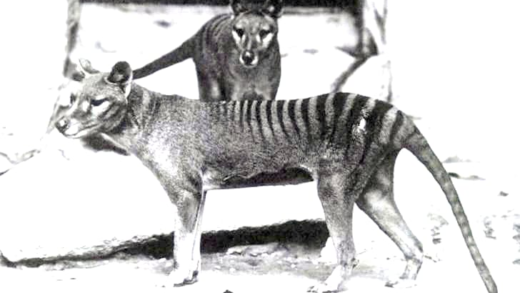NASCAR tracks like Daytona and Talladega are iconic for their unique characteristics. Daytona’s tri-oval design allows for high speeds, while Talladega’s long layout creates thrilling drafting opportunities. Bristol’s close-quarters racing and Richmond’s D-shaped track add to the excitement. Each track has its own story, enhancing fan engagement and the overall racing experience.
Types of NASCAR Tracks
NASCAR race tracks come in various types, each providing unique challenges for drivers and thrilling experiences for fans. Understanding these types is essential for grasping the excitement of NASCAR racing.
1. Oval Tracks
The most common type of NASCAR track is the oval. These tracks are typically 0.5 to 2.5 miles long and feature a symmetrical, elliptical shape. The banking on these tracks can vary significantly, which influences the racing dynamics. High-banked ovals, like Daytona, allow for high-speed racing and thrilling overtakes.
2. Road Courses
Unlike ovals, road courses include a series of turns and elevation changes. They challenge drivers with sharp corners and varying terrains. Famous road courses like Watkins Glen and Sonoma demand high technical skills, making them favorites among racing purists. The diversity in track layout keeps both drivers and fans on their toes.
3. Superspeedways
Superspeedways are a specific type of oval track, typically over 2 miles long. They are designed for high-speed racing, allowing cars to reach incredible speeds. Tracks like Talladega and Daytona are famous for their thrilling races, where drafting plays a crucial role in strategy.
4. Short Tracks
Short tracks are less than a mile long and provide an entirely different racing experience. These tracks, such as Bristol and Martinsville, often lead to close-quarters racing and frequent cautions due to the tight turns. The atmosphere at these tracks is electric, as fans are just feet away from the action.
Conclusion
Each type of NASCAR track offers a distinct experience, both for drivers and fans. From the high speeds of superspeedways to the technical challenges of road courses, NASCAR race tracks are designed to showcase the skills of drivers and provide thrilling entertainment for spectators.
Track Design Features
NASCAR race tracks are designed with specific features that reflect their geographical locations. These design elements greatly influence the racing experience, from track length and shape to safety features and fan engagement.
1. Elevation Changes
Elevation plays a significant role in NASCAR track design. Tracks like Bristol Motor Speedway feature steep banks and dramatic elevation changes, which create thrilling racing conditions. The differences in elevation can affect car handling and driver strategy. For example, a driver might need to adjust their speed and braking technique based on how the elevation impacts the car’s grip.
2. Banking Angles
The banking angle of a track also shapes the racing dynamics. High-banked tracks, such as Daytona International Speedway, allow for higher speeds and more aggressive racing. These tracks have angles that can range from 30 to 33 degrees, creating a thrilling experience for both drivers and fans. Conversely, flatter tracks demand different driving techniques and can lead to more strategic racing, as seen at places like Martinsville Speedway.
3. Geographical Influence
The geographical features surrounding a NASCAR track impact its design. For instance, tracks located in mountainous regions may incorporate more elevation changes, while those in flat areas tend to have more straightforward layouts. Weather also plays a part; tracks in hotter climates may have different surface materials to handle heat better, affecting tire wear and grip.
4. Safety Features
Safety is paramount in NASCAR track design. Features like SAFER barriers, which absorb impact energy, are critical. Tracks are also designed with runoff areas and gravel traps to minimize injuries during accidents. The design of these safety features varies based on the track’s location and typical weather conditions, ensuring that they provide maximum protection to drivers.
Conclusion
Understanding the design features of NASCAR tracks reveals how location and geography shape the racing experience. From elevation changes to safety features, these elements are essential in creating thrilling and safe racing environments.
Unique Characteristics of Iconic NASCAR Tracks
NASCAR race tracks like Daytona and Talladega stand out not only for their thrilling races but also for their unique characteristics that make them legendary. These tracks have rich histories and layout quirks that contribute to their allure among fans and drivers alike.
1. Daytona International Speedway
Daytona is synonymous with NASCAR racing. Its unique 2.5-mile tri-oval design, featuring 31-degree banking in the turns, allows cars to reach incredible speeds, often exceeding 200 mph. The track hosts the prestigious Daytona 500, a race that kicks off the NASCAR season and is revered by fans worldwide. The history of Daytona is steeped in racing lore, with its inaugural race in 1959 marking a new era for stock car racing. The grandstands at Daytona can hold over 100,000 fans, creating an electrifying atmosphere that enhances the racing experience.
2. Talladega Superspeedway
Talladega, another iconic track, is known for being the longest NASCAR oval at 2.66 miles. Its wide racing surface and steep banking allow for high-speed drafting, which leads to thrilling finishes and nail-biting action. The track’s unique layout has produced some of the closest finishes in NASCAR history. Talladega is also famous for its “Big One,” a term used to describe the multi-car pileups that often occur due to the high-speed racing dynamics. The track’s seating capacity is impressive, accommodating around 80,000 fans, making it a favorite for both racers and spectators.
3. Bristol Motor Speedway
Bristol is distinct for its short track design and steep banking, creating a unique racing environment. The half-mile oval is known for its close-quarters racing and frequent cautions, leading to a highly competitive atmosphere. The stadium-like setting, with seating for over 160,000 fans, allows spectators to be just feet away from the action, enhancing the thrill of the race. Bristol’s history is rich, with many memorable moments that have solidified its status as a fan favorite.
4. Richmond Raceway
Richmond is another notable track, featuring a unique three-quarter mile layout that combines the speed of a short track with the excitement of a larger venue. The track’s D-shaped design allows for competitive racing and multiple lines, giving drivers various strategies to employ. Richmond also hosts the NASCAR Cup Series playoffs, adding to its prestige. The atmosphere here is intimate, with fans enjoying a close-up view of the action, making it a unique experience in the NASCAR circuit.
Conclusion
The unique characteristics of famous NASCAR tracks like Daytona, Talladega, Bristol, and Richmond make them stand out in the racing world. Their distinct designs, rich histories, and fan engagement strategies contribute to their iconic status. Understanding these features enhances the appreciation of NASCAR racing and the experiences these tracks offer.





Comments are closed.